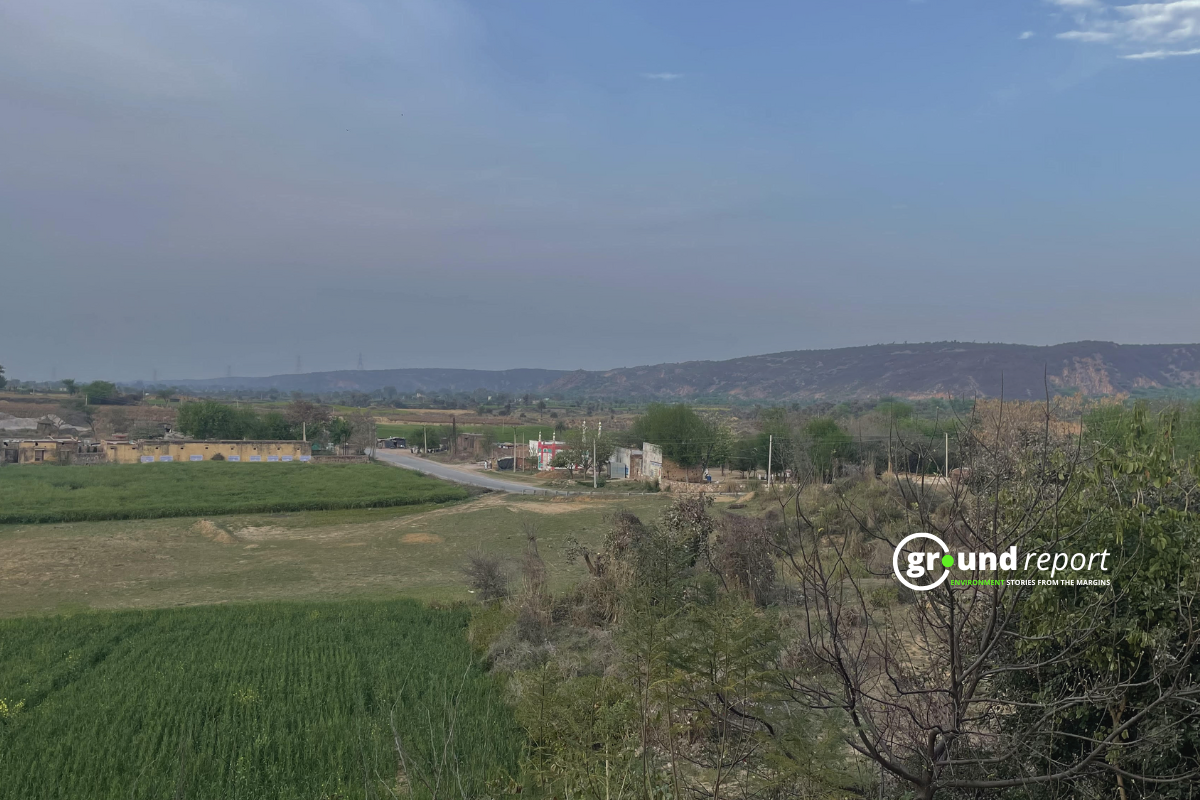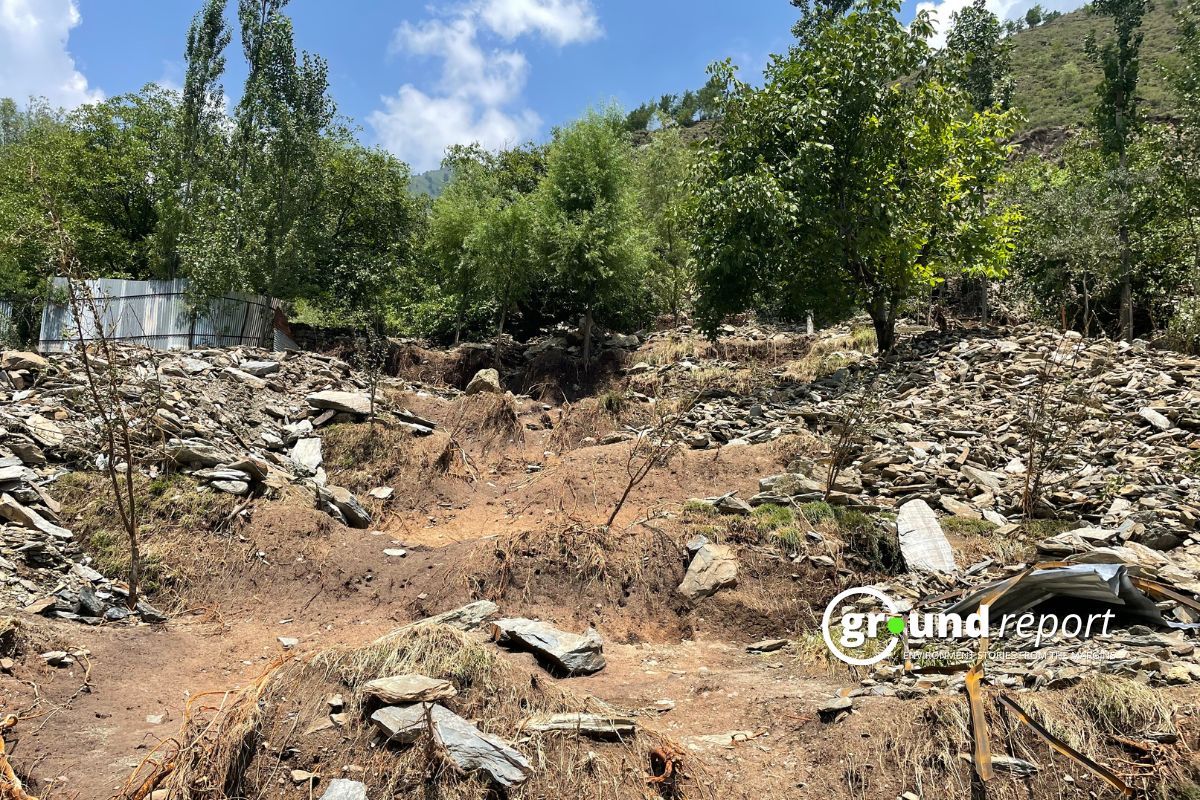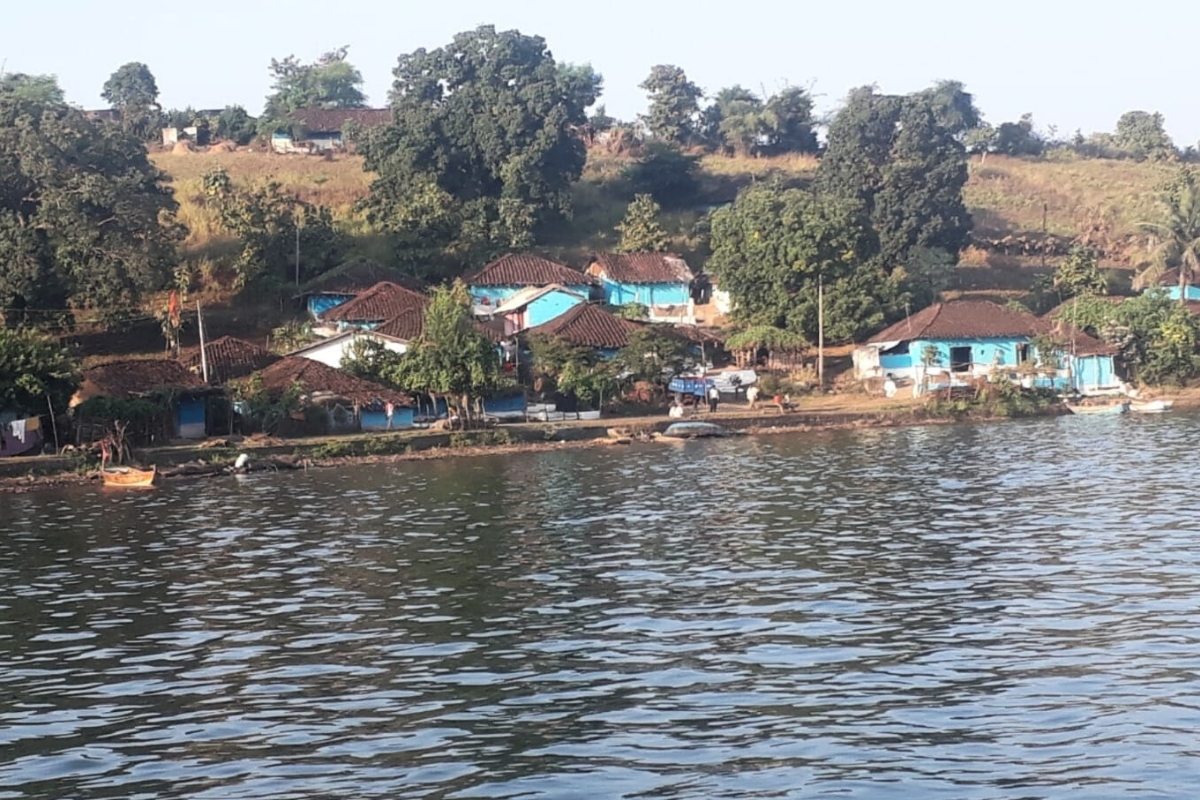The annual Amarnath Yatra pilgrimage to the Amarnath Cave in Kashmir will start on June 29, 2024, at 12,700 feet. The Jammu and Kashmir administration is ensuring a safe yatra, despite concerns about extreme weather events and environmental challenges. The recent Amarnath Yatra history shows more frequent and severe weather disruptions. In 2023, the Yatra had 48 deaths and 62 injuries due to weather and natural causes, leading to multiple suspensions. The yatra was suspended for 14 days out of the 62-day pilgrimage, including July 7-10, 16, and August 23-31.
The changing weather pattern significantly impacts the local communities supporting the yatra. Mushtaq Ahmad Khan, a local from Hari Ganiwan who provides horse rides to pilgrims, shared his observations with Ground Report.
“In my 12 years of working during the yatra, I’ve never seen such unpredictable weather… sudden rain, hailstorms, and temperature drops are more common. It’s not just about our business; it’s about the safety of the pilgrims and ourselves. Last year, I lost two horses to a flash flood. The changing climate is affecting all of us.”
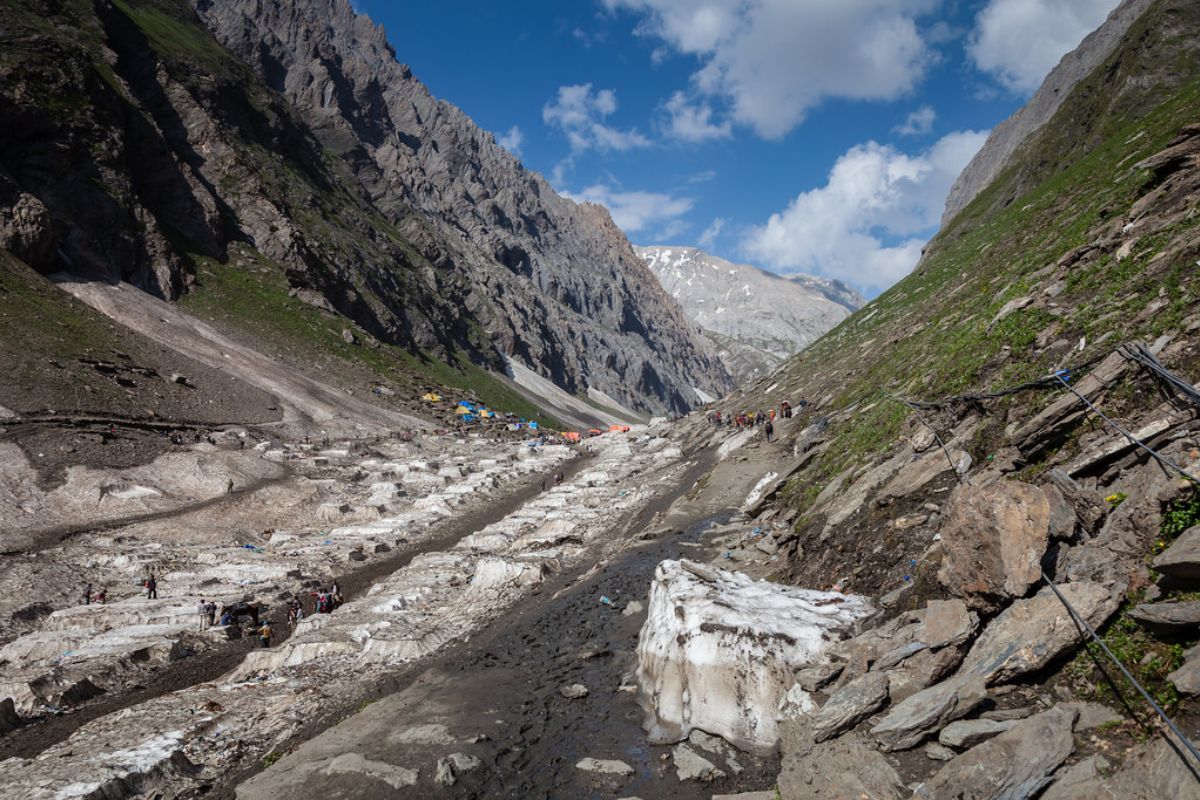
Lt. Governor Manoj Sinha recently participated in the ‘Pratham Puja’ at the cave shrine, marking the start of the pilgrimage preparations. He stated,
“Facilities, infrastructure, and security have been enhanced,” and emphasized the government’s commitment to pilgrim safety, saying, “We are taking every measure to ensure a smooth and secure yatra.”
The Amarnath shrine is located at 3,657 meters in Batakote in Pahalgam at the remote end of the Lidder Valley, surrounded by glaciers like Nehnar, Kolhai, and Bodpathri. This region overlooks Lidder Valley and Sonamarg, crucial for the water supply of the major tributary to the Jhelum River, the Lidder, and houses a significant portion of Kashmir’s glaciers.
Past five years: A record of challenges
Similarly, the 40-day yatra was suspended for 11 days on July 5, 6, 8, 9, 10, 11, 14, 22, 26, 29, and August 7 in 2022. The 46-day yatra in 2019 was suspended for 6 days due to bad weather and ended 15 days early. The yatra in 2018 was suspended for 8 days due to weather, affecting June 29, 30, July 4, 7, 8, and August 21 to 23.
Recent years have shown more weather-related disruptions:
-
2018: The yatra was suspended for 8 days due to weather.
-
In 2019, the 46-day yatra was suspended for 6 days and ended 15 days early.
-
In 2022, the 40-day yatra was suspended for 11 days and 49 deaths due to natural causes.
-
In 2023, yatra had 48 deaths and 62 injuries due to weather and natural causes, with 14 days of suspension.
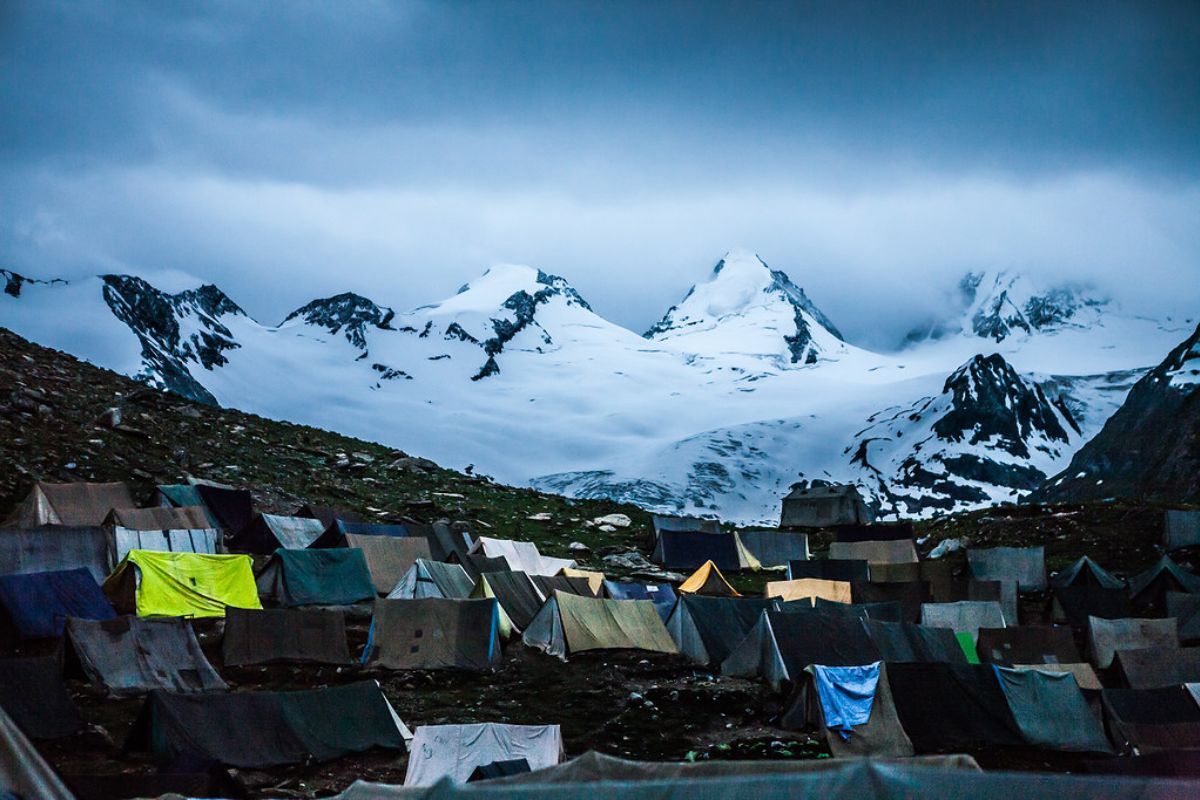
Interruptions highlight the yatra’s vulnerability to extreme weather. This vulnerability is compounded by tragic incidents like the 1996 tragedy where 243 pilgrims died due to exhaustion and exposure. In 2015, a cloudburst at the Baltal base camp of the Amarnath shrine killed three and injured 11, also damaging 100 vehicles and 50 tents. More recently, in 2022, a cloudburst near the Lidder Valley triggered a flash flood, killing at least 16 people. This brought the 2022 overall death toll to 49 due to natural causes. Reports suggest the actual death toll could be higher than official figures.
Khan raised concerns about the accuracy of official reports. He stated, “More pilgrims struggle with the journey each year. The unpredictable weather and reports don’t capture the hardships faced by pilgrims and locals.”
Addressing weather challenges
While saddening, these incidents raised concerns about the India Meteorological Department (IMD), alleging lapses in weather prediction and cautionary measures. Until last year, the IMD had only two radars in Jammu and Kashmir– one in Srinagar and another in Jammu. The Srinagar radar couldn’t detect precipitation in Sonamarg and Pahalgam due to the mountainous terrain.
Improvements are being made to mitigate weather challenges. An IMD official highlighted efforts, stating, “A Weather Doppler Radar was installed at Banihal Top and is operational, covering the entire route.”
The IMD will release regular weather bulletins and early morning updates for all officers involved in the yatra arrangements to be informed about sector-wise weather forecasts. Hi-tech weather systems, including Automatic Weather Stations (AWS), are being installed at key locations like Chandanwari, Sheshnag, Panjtarni, the Amarnath cave shrine, and Baltal.
A New Delhi-based non-profit, Climate Trends, said the “cloudburst frequency in the western Himalayan region is increasing due to faster evaporation from high-altitude glacial lakes, a consequence of global warming”.
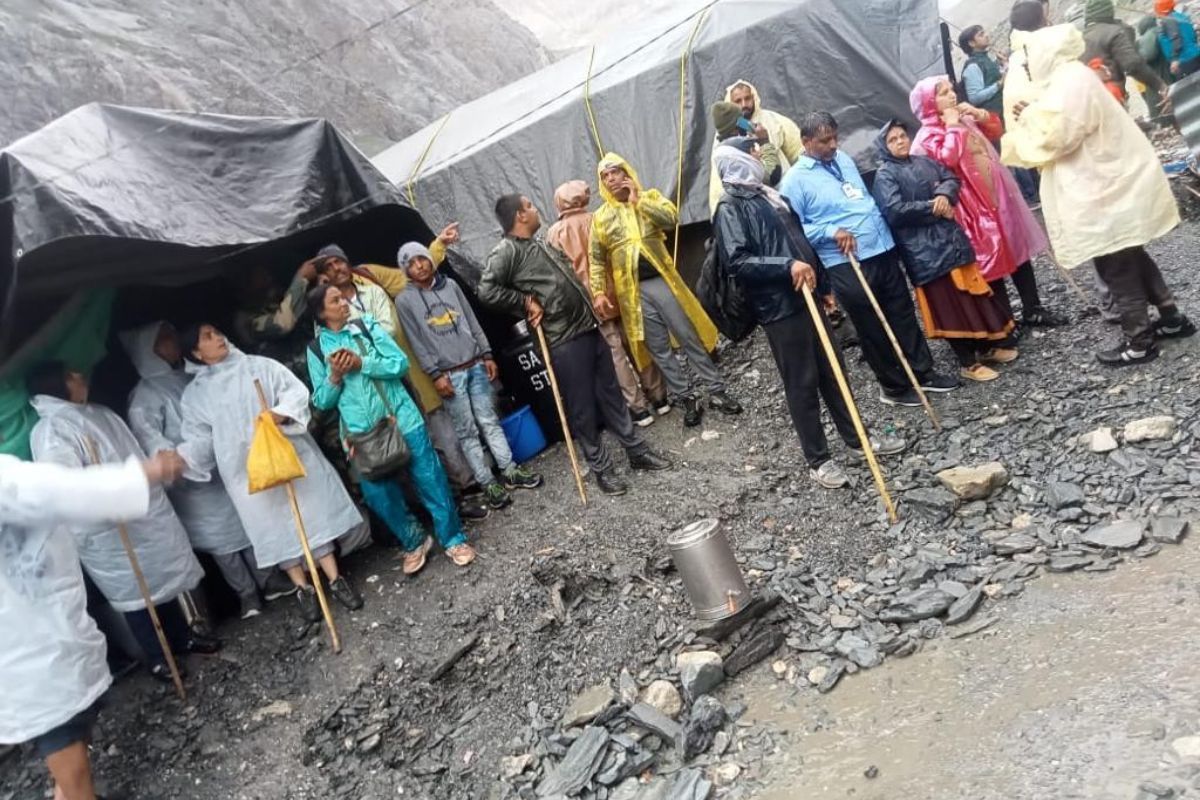
Mohammad Sultan Bhat, head of the Department of Geography and Regional Development at Kashmir University, highlights the impact of global warming on these glaciers. Bhat, who conducted an Environmental Impact Assessment (EIA) of the Lidder Valley, says the area can only sustain 4,300 people per day. Interestingly, as per official data, In the first 25 days 2023, on arrange 12,00 pilgrims visit cave while the area can only handle 4300 people daily an average of 12,353 pilgrims visited the cave daily during the first 25 days of last year’s pilgrimage.
For over a decade, the number of visitors to the Amarnath Cave has consistently exceeded the region’s capacity during the initial pilgrimage phase.
Health and safety measures
Dr. Mushtaq Ahmad Rather, Director of Health Services Kashmir, outlined the enhanced medical preparations for this year’s yatra. He said,
“We’ve expanded our medical infrastructure along the Yatra route. Over 100 doctors will issue Compulsory Health Certificates across Jammu. We’ve set up advanced medical camps at key points, equipped to handle emergencies, with a focus on prevention as much as treatment.”
Dr. Mushtaq addressed incident reporting concerns, saying,
“We aim for accurate reporting of all health incidents during the yatra. However, the difficult terrain and rapid weather changes can complicate our efforts. We’re continuously improving our monitoring and response systems.”

Dr. Aqib Ahmad, posted at PHE Sonamarg oversee the health of Amarnath Yatra Pilgrims cautioned that many pilgrims often underestimate the physical demands, especially those with pre-existing conditions. “Altitude sickness, hypothermia, and worsening of chronic illnesses are common. Our enhanced screening aims to identify at-risk individuals and provide guidance.” He emphasized the importance of health assessment before the Amarnath Yatra pilgrimage.
Despite the weather and environmental challenges, the 2024 Amarnath Yatra showcases the enduring faith of Hindu pilgrims and the efforts of the Jammu and Kashmir administration to ensure safety. Authorities aim to mitigate risks and provide a secure pilgrimage with enhanced infrastructure, medical facilities, and improved weather forecasting.
Keep Reading
Part 1: Cloudburst in Ganderbal’s Padabal village & unfulfilled promises
India braces for intense 2024 monsoon amid recent deadly weather trends
Support us to keep independent environmental journalism alive in India.
Follow Ground Report on X, Instagram and Facebook for environmental and underreported stories from the margins. Give us feedback on our email id greport2018@gmail.com.
Don’t forget to Subscribe to our weekly newsletter, Join our community on WhatsApp, and Follow our YouTube Channel for video stories.


